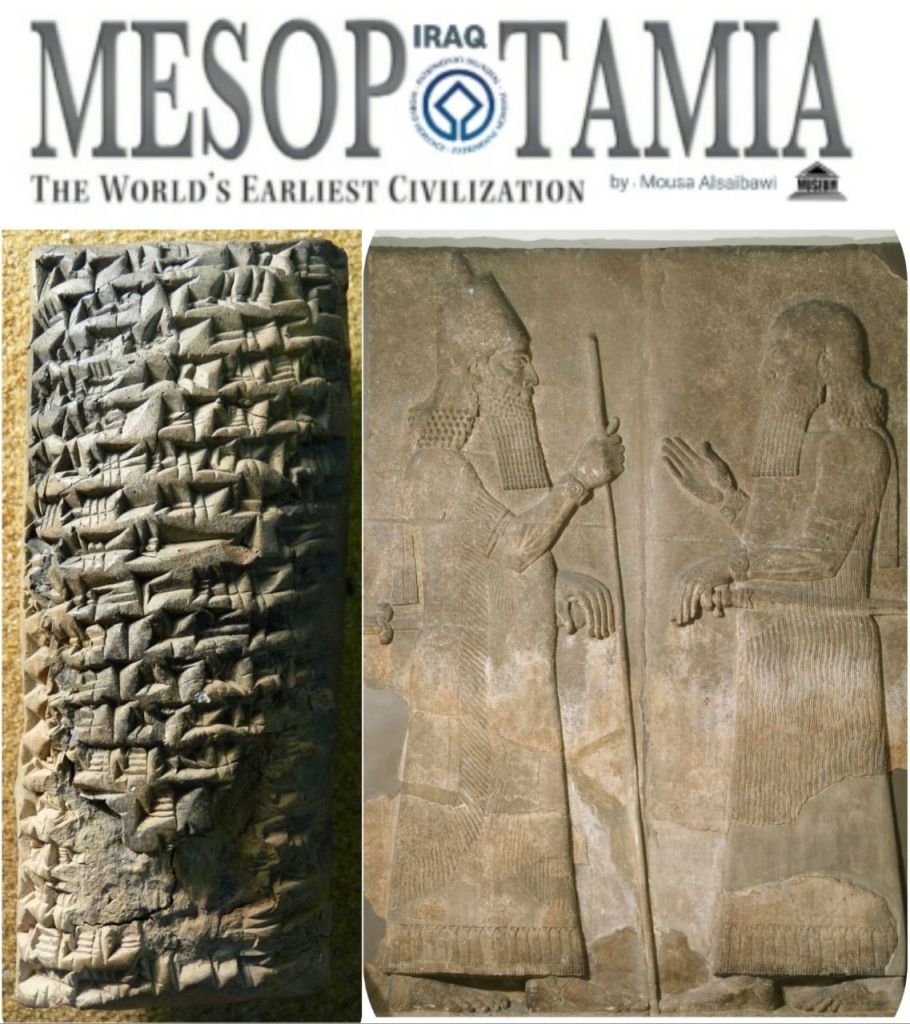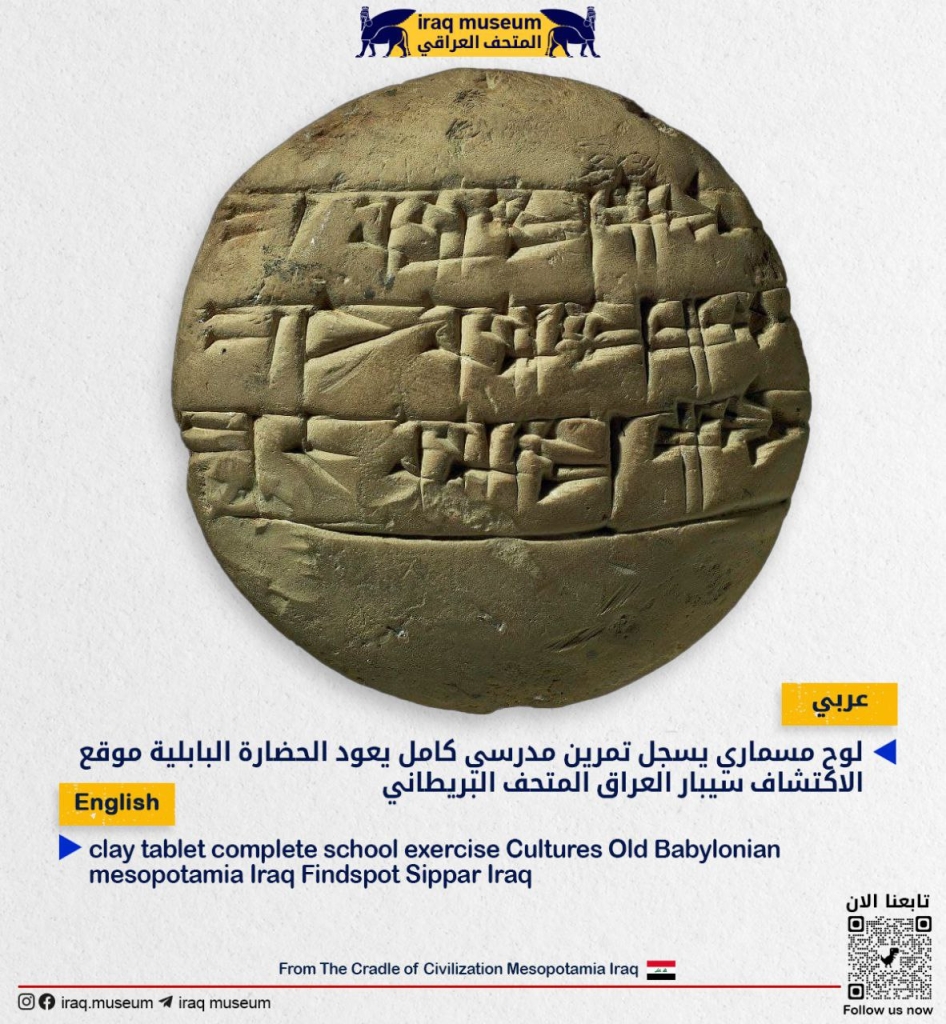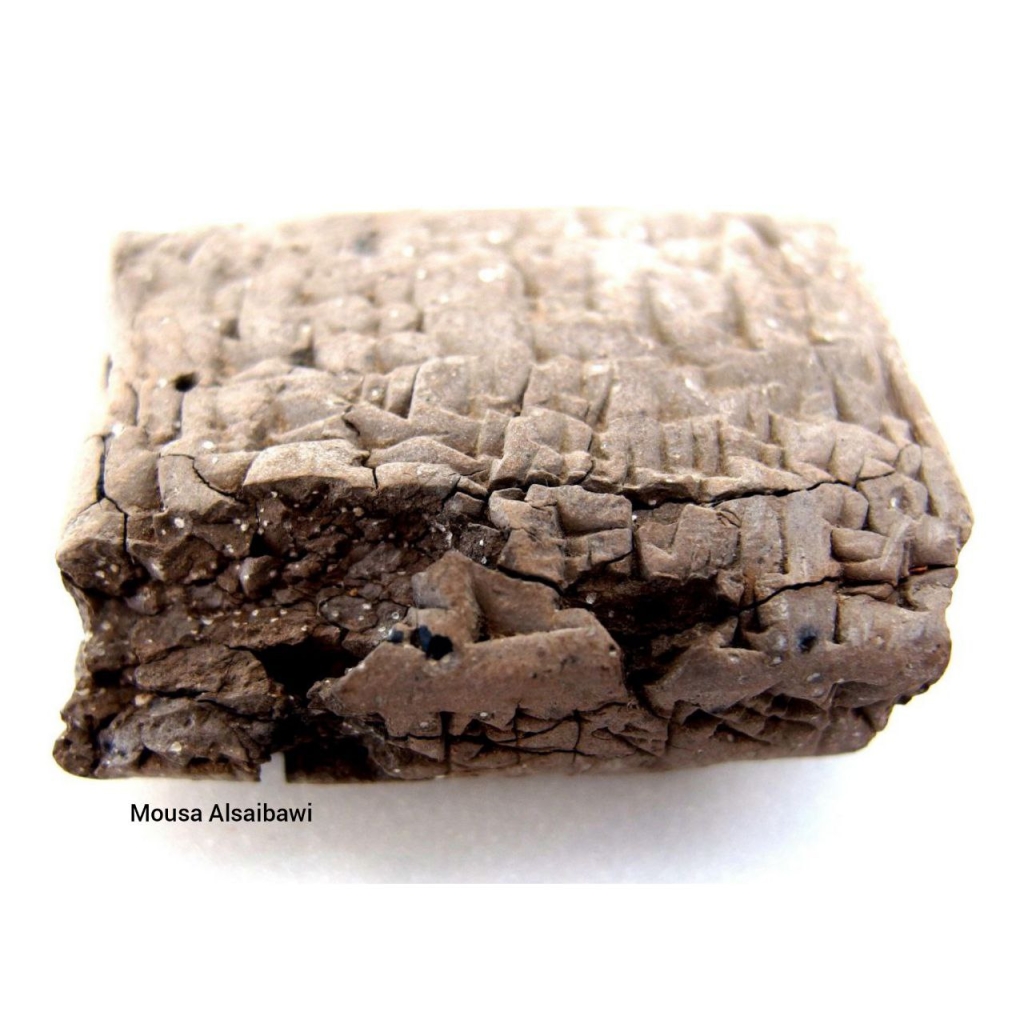
Clay tablet administrative tablet bureaucratic compilation of the Ur III dynasty register of fields and their yields over one year the largest cuneiform tablet known discovered in mesopotamia Iraq and now at the British museum
2082 BCE

Description Clay tablet. List of wages for various gangs of workmen Authority Ruler: Shulgi Sumerian civilization Mesopotamia iraq
2094 – c. 2046 BC His accomplishments include the completion of construction of the Great Ziggurat of Ur begun by his father Ur-Nammu

The surveillance of the king of Urartu was one the main tasks of the Assyrian intelligence service, as illustrated by this letter from Gabbu-ana-Aššur to his king Sargon. British Museum, K 574 = SAA 5 113; photo by Greta Van Buylaere
communication between centre and provinces worked quickly and efficiently. Moreover, Sargon was almost constantly on the move, taking a very active role in military campaigns

Description Clay tablet Record of cultivation of orchards with areas, numbers of fruit trees (date palms, pomegranates,apples, etc.) and names of gardeners; 4 cols.
periodsThird Dynasty of Sumerian civilization Mesopotamia Iraq

allocation of butter, cheese and dates for Ningal-a-anda and somebody else (name missing) received from Ga-nun-mah of Ningal by gudu-priests
Excavated by: Sir Leonard Woolley
Gungunum (Akkadian: 𒀭𒄖𒌦𒄖𒉡𒌝, Dgu-un-gu-nu-um) was a king of the city state of Larsa in southern Mesopotamia, Iraq ruling from 1932 to 1906 BC.According to the traditional king list for Larsa, he was the fifth king to rule the city

Clay tablet fragment schooltext. Old Babylonian.
Cultures/periods
Late Babylonian mesopotamia Iraq

Description Clay tablet with four lines of inscription; school tablet with proverb; this is the teacher’s version; the pupil’s copy is on the other side. Babylonian
Production date1900BC-1700BC mesopotamia Iraq


Limestone memorial stele or tablet of Tukulti-Ninurta I King of Assyria
inscribed with roughly thirty-three lines of cuneiform text on one side and twenty-three lines of the text on the other side, both recording his titles and genealogy and describing briefly his numerous campaigns; there is also a reference to his building of Kar Tukulti-Ninurta; begining
Middle Assyrian
Production date
1230BC
King of Assyria
King of Sumer and Akkad
The king of the four corners of the world
King of all peoples
Excavated by: Walter Andrae Findspot Kar-Tukulti-Ninurta
Salah al-Din Governorate, Iraq
Mousa Alsaibawi

Clay tablet administrative tablet bureaucratic compilation of the Ur III dynasty register of fields and their yields over one year the largest cuneiform tablet known discovered in southern Mesopotamia Iraq 2112 BCE
Sumerian civilization

list of amounts of grain (7th distribution) paid out to officials and servants of the temple of Bau
Ruler Uruinimgina
Sumerian discovered in Tello Mesopotamia Iraq

Excavated by: Austen Layard Nineveh mesopotamia Iraq Library of Ashurbanipal
Inscription note: Here the writer, in response to an enquiry from the king, gives a date for the casting of bronze column-bases in the shape of lions for part of the royal palace of Sargon II at dur sharukin . He also reports on the progress of manufacture of the temple doors, which are to be covered with silver and bronze sheet. date710BC-705BC Neo-Assyrian British museum
Mousa Alsaibawi

A fragment of stone inscribed with part of the so-called “Standard Inscription” of Ashurnasirpal II of Assyria (883–859 BC), mounted in a wooden frame.
883BC-859BC
Findspot: Nimrud
Inscription language: Akkadian
Inscription script: cuneiform
Inscription translation: 1’ … fortresses of Karduniash… 2’ … I installed my governors… 3’ … entire mountainous regions, king of lords…

This letter, sent to Sargon by the two fort commanders of the Babylonian town of Šabhanu, is one of the few letters addressing the king by name To Sargon, king of the universe British Museum, K 588 photo by Greta Van Buylaere.
To Sargon, king of the universe: thus say your servants Ha’il-il and Zabdi-il, who guard the fortress of Šabhanu for the king, their lord. The king’s fortress is well. Good health to the king, our lord!

Foundation Tablet in Gold Provenience
From Dur-Sharrukin Assyrian city in mesopotamia Iraq
( 900-600 BC)
Louvre Museum
Found together with three other inscriptions on precious materials, including silver, the inscription commemorates Sargon II’s founding of the Neo-Assyrian capital at Dur-Sharrukin Typical of inscriptions found in the foundations of official buildings, this one includes information about the royal titulary of the king; his building activities in the city, including palaces and temples; and curse formulae against anyone who may destroy property of the king

Excavated by: Austen Layard Nineveh mesopotamia Iraq
Inscription note: Here the writer, in response to an enquiry from the king, gives a date for the casting of bronze column-bases in the shape of lions for part of the royal palace of Sargon II at dur sharukin . He also reports on the progress of manufacture of the temple doors, which are to be covered with silver and bronze sheet. date710BC-705BC Neo-Assyrian British museum
Mousa Alsaibawi

Clay tablet ration list this records allocations of food to groups of workers many of whom were Egyptian in origin
Late Babylonian
600BC Excavated by: Hormuzd Rassam
Findspot Babylon Iraq mesopotamia

Inscribed 2 sides plus seal impressions Concerning litigation in court
Country Iraq Mesopotamia
Place site Yorghun Tepe
Period Middle Assyrian

Cuneiform cylinder inscription of Nebuchadnezzar II describing the construction of the outer city wall of Babylon iraq Mesopotamia ca. 604–562 B.C.
“I built a strong wall that cannot be shaken with bitumen and baked bricks… I laid its foundation on the breast of the netherworld, and I built its top as high as a mountain.”

fired clay brick of Shalmaneser III
Neo-Assyrian date 859BC-840BC/Findspot: Nimrud Iraq mesopotamia
translation : Shalmaneser, the great king, strong king, king of the world, king of Assyria, son of Ashurnasirpal, the great king, strong king, king of the world, king of Assyria, son of Tukulti-Ninurta, king of the world, king of Assyria. Construction of the ziggurat of Kalhu.

loan of money, ten days free of interest afterwards 20% from Babylon

Excavated by: Sir Leonard Woolley
Findspot Ur Iraq mesopotamia Old Babylonian
Clay tablet with fifteen and two and four and three? lines of inscription; delivery of honey, fennel, resin of cypress and pine-nuts etc. in varying quantities; Old Babylonian; incomplete; damaged; partially repaired
Mousa Alsaibawi

agreement between Warad-Sin, Ahusunu and Sin-taiar to work together to share profits.
Old Babylonian civilization mesopotamia Iraq
Excavated by: Sir Leonard Woolley
Excavated/Findspot: Ur Iraq
Mousa Alsaibawi


